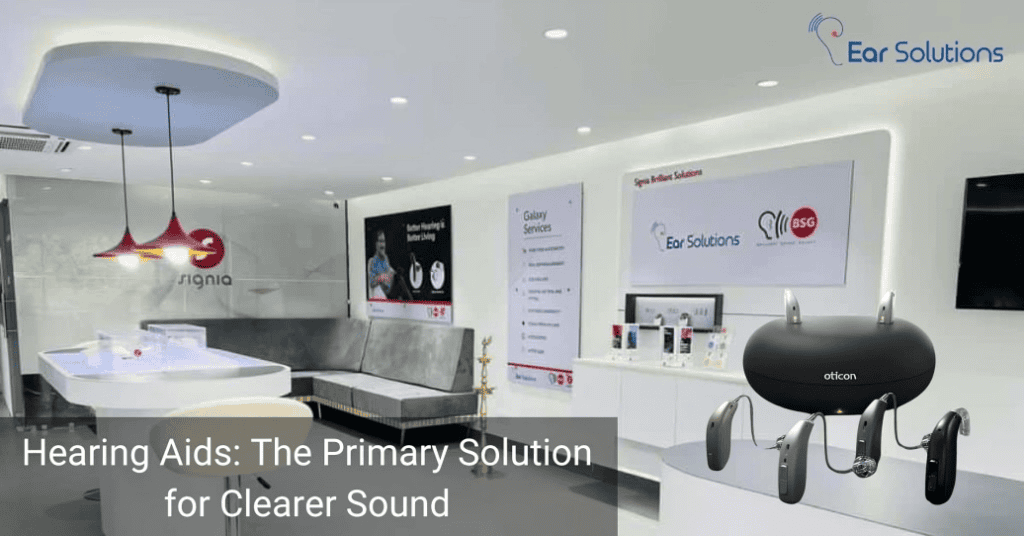Hearing loss can be a significant barrier to communication and overall quality of life. It impacts not just the ability to hear but also mental well-being, social interactions, and daily functionality. Thankfully, hearing aids have evolved into sophisticated devices that offer a primary solution for clearer sound and improved hearing. From advanced technology to personalized features, hearing aids address the diverse needs of individuals with hearing difficulties.
Understanding Hearing Aids: A Brief Overview
Hearing aids are small electronic devices that amplify sound to improve hearing ability. They consist of three main components:
Microphone: Captures sound from the environment.
Amplifier: Increases the strength of the sound signal.
Speaker: Delivers amplified sound into the ear.
Modern hearing aids also come with additional features like noise reduction, Bluetooth connectivity, and directional microphones, making them far more effective than earlier models.
Why Hearing Aids Are Essential for Clearer Sound
1. Restoring Hearing Ability
Hearing aids amplify sounds, making it easier for individuals with hearing loss to hear conversations, music, and environmental sounds. They are designed to address different levels of hearing loss, from mild to profound, ensuring users experience sound clarity tailored to their needs.
2. Enhancing Speech Recognition
One of the most common struggles for those with hearing loss is understanding speech, especially in noisy environments. Modern hearing aids use advanced algorithms to differentiate speech from background noise, allowing users to focus on conversations.
3. Reducing Listening Effort
Hearing loss often forces individuals to concentrate harder on listening, leading to mental fatigue. Hearing aids alleviate this burden by amplifying and clarifying sounds, reducing the cognitive strain required to process auditory information.
Key Features of Modern Hearing Aids
Modern hearing aids have transformed the way individuals experience sound. Some of the standout features include:
1. Digital Signal Processing (DSP):
Converts sound into digital signals for precise amplification.
Offers customizable settings for different environments, such as quiet rooms, bustling streets, or concert halls.
2. Noise Reduction and Feedback Cancellation:
Suppresses background noise for clearer communication.Eliminates whistling or feedback, a common issue in older models.
3. Bluetooth Connectivity:
Connects to smartphones, TVs, and other devices for seamless audio streaming.
Allows users to take calls or listen to music directly through their hearing aids.
4. Rechargeable Batteries:
Provides convenience by eliminating the need for frequent battery replacements.Ideal for active users who are always on the go.
5. Directional Microphones:
Focus on sounds coming from specific directions, making conversations in noisy environments easier to follow.
Types of Hearing Aids for Different Needs
Hearing aids come in various styles to cater to individual preferences and levels of hearing loss.
1. Behind-the-Ear (BTE):
Suitable for all degrees of hearing loss.
Offers a comfortable fit with external components resting behind the ear.
2. Receiver-in-Canal (RIC):
Discreet design with the speaker placed inside the ear canal.
Known for natural sound quality.
3. In-the-Ear (ITE):
Custom-molded to fit the outer ear.
Easy to handle and maintain.
4. Completely-in-Canal (CIC):
Almost invisible as it fits entirely inside the ear canal.
Suitable for mild to moderate hearing loss.
Benefits of Using Hearing Aids
Hearing aids not only improve hearing but also enhance overall quality of life.
Improved Communication:Enables better conversations, reducing misunderstandings and frustration.
Enhanced Social Confidence:Encourages individuals to participate in social events without worrying about missing out on conversations.
Better Mental Health:Reduces the risk of isolation, depression, and cognitive decline associated with untreated hearing loss.
Increased Safety:Allows users to hear warning sounds like car horns, alarms, or sirens, enhancing personal safety.
Workplace Efficiency:Helps professionals stay productive by ensuring they don’t miss important discussions or instructions.
The Future of Hearing Aids: What to Expect
Hearing aid technology continues to evolve, offering users greater convenience and functionality. Innovations to watch for include:
AI Integration: Personalized sound settings that adapt to user preferences and environments.
Health Monitoring: Devices equipped with sensors to track heart rate, steps, and more.
Smaller, Discreet Designs: Continued advancements in miniaturization without compromising sound quality.
Conclusion
Hearing aids are a primary solution for achieving clearer sound and improved hearing in daily life. With advanced technology, they offer a seamless listening experience tailored to individual needs. Whether it’s enjoying a family gathering, participating in a business meeting, or simply listening to the sounds of nature, hearing aids ensure users don’t miss out on life’s precious moments.
Investing in the right hearing aid is not just about better hearing—it’s about enhancing the quality of life, fostering connections, and regaining confidence in every aspect of life.





